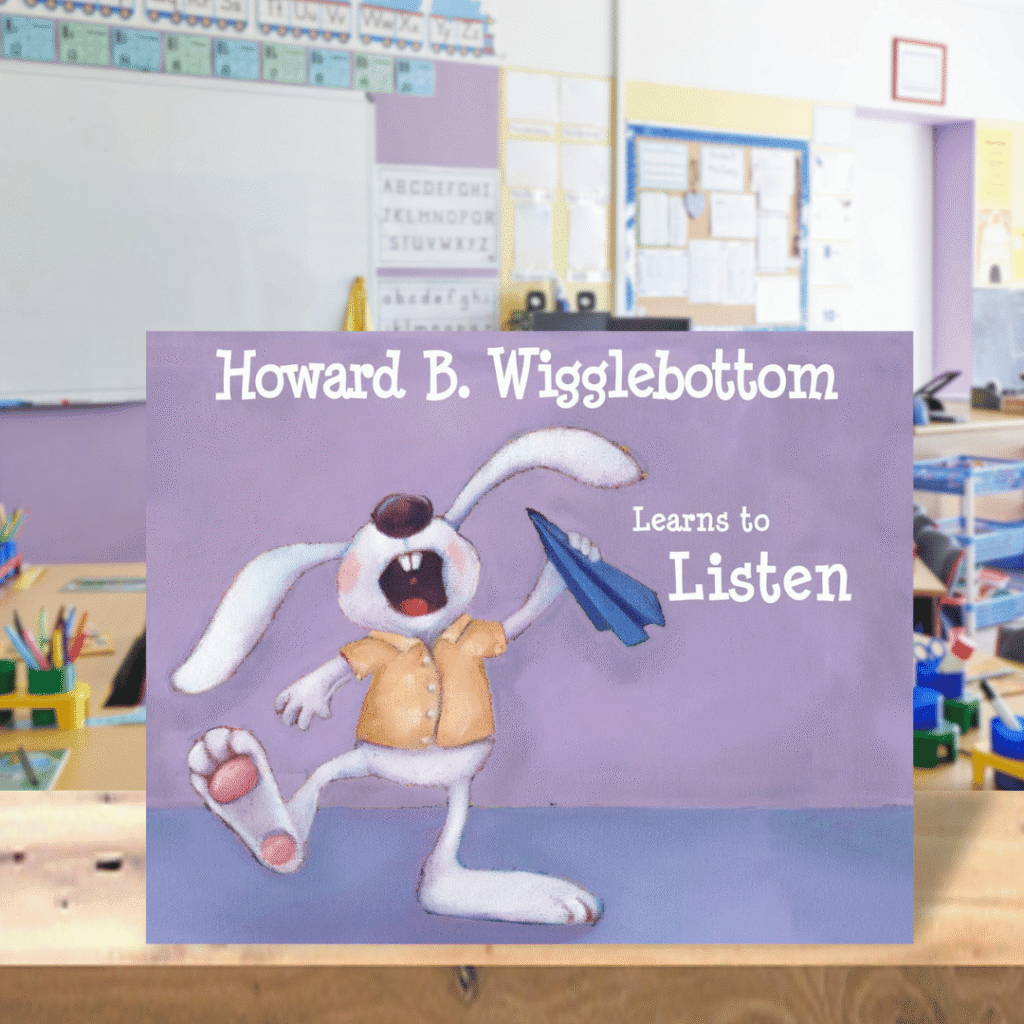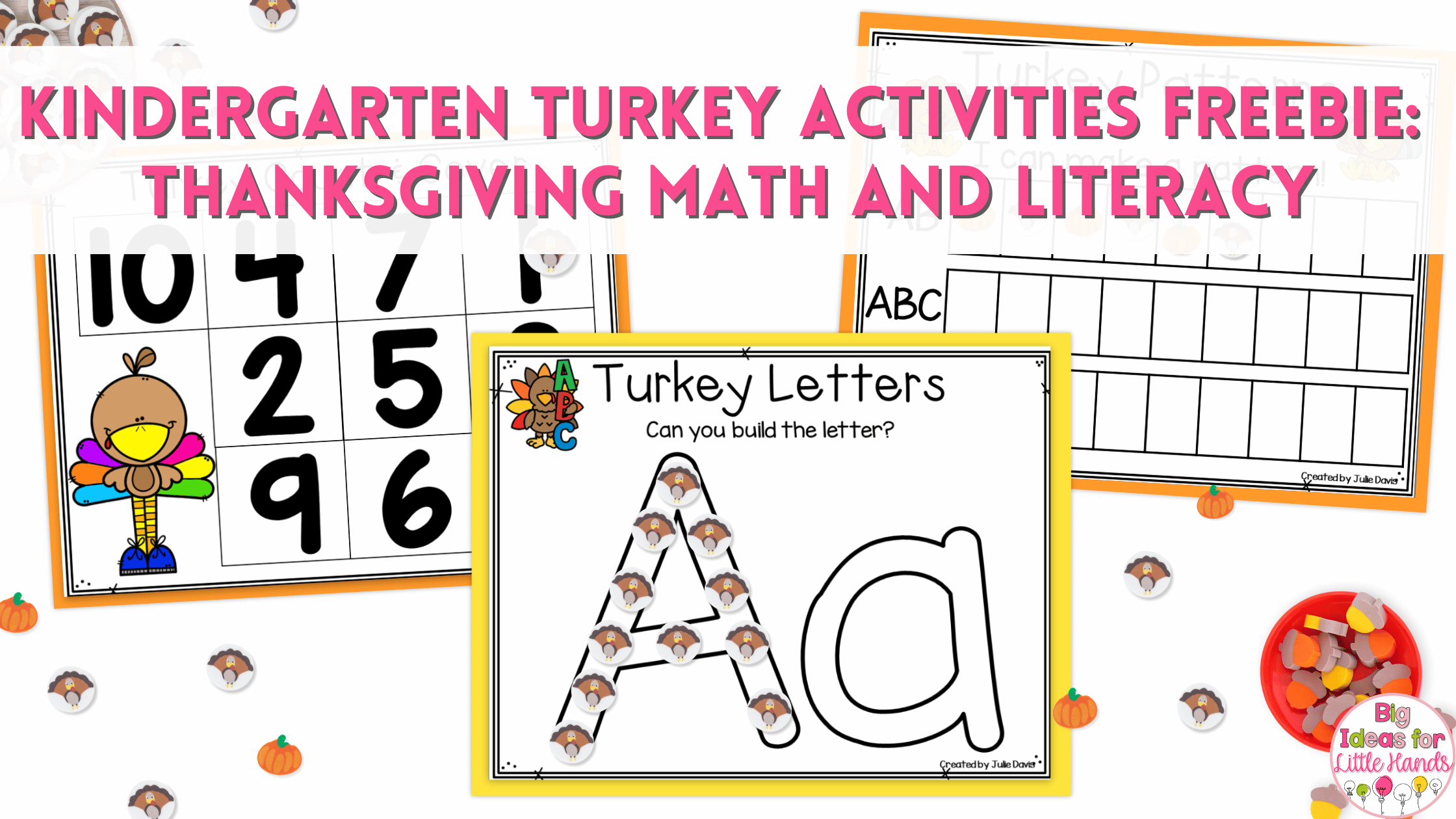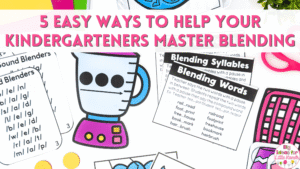Teaching self-control in the moment can feel like trying to herd kittens. But it’s also one of the most important life skills we can help our students develop. When kids learn to pause, think, and make positive choices, everything from transitions to learning time runs smoother. Today, I’m going to share some fun and easy ways for teaching self-control that you’ll actually want to use!

Why Teaching Self-Control is a MUST-DO!
I know, you’ve got a mile-long prep list and a pacing guide screaming for your attention. Primary teachers have a lot of boxes to check, and I know it’s tempting to skip this lesson and jump right into your curriculum. While teaching self-control might seem like a “nice to do”, trust me, friend. . . this is an absolute must in the primary classroom!

Self-control is one of the most essential social-emotional skills we can teach in the early years. In a classroom full of curious, energetic, and still-developing little learners, self-control helps students manage big feelings, follow directions, take turns, and respond appropriately in social situations.
It’s the foundation for learning behaviors like raising a hand, walking in line, and working independently without constant redirection. When students practice self-control, they’re building skills that impact their friendships, academic success, and ability to problem-solve throughout life. Simply put, strong self-control skills lead to a smoother classroom and more confident, capable kids! Not to mention, I promise it will make your job as their teacher so.much.easier. Ready to get started? Let’s dive into my favorite ways to teach self-control!
Start with Books on Teaching Self-Control
If you’re a primary teacher, it’s quite possible that you love picture books as much as I do. They’re an essential part of my lesson planning and offer a fun way to dive into new concepts. I love framing our lessons with a new book, and there’s no shortage of great ones out there to help make teaching self-control easier! After all, what’s better for modeling great and not-so-great behaviors than colorful illustrations and fun stories? Here are a few of my favorites.
David Gets in Trouble by David Shannon
This is one of the best books available on teaching impulse control and helping children identify positive choices from negative ones. I love the watercolor-style pictures and the fun text in this book. It also does a great job of helping children understand that we must take responsibility for our actions and how what we do affects others.
Interrupting Chicken by David Ezra Stein
The title of this story alone makes me laugh. I just love it! In this hilarious picture book, we meet a young chicken struggling to learn patience – especially when others are speaking! This might sound familiar to some of your students. I use this book to model why waiting for our turn and listening to others are so important.
Howard B. Wigglebottom Learns to Listen by Howard Binkow
This is another title that is bound to make your kids smile! In this story, we meet Howard, the hilarious rabbit who can’t seem to sit still, listen, or follow directions. Howard’s choices lead to some consequences, and he learns to pause before acting. This is great for circle time and class discussions about listening and self-control. I always like to work in some chats about the consequences for common classroom offenses and how they can be avoided.
What If Everybody Did That? by Ellen Javernick
This is a picture book that will really get your kids thinking about the choices they make. In the story, you’ll walk through everyday situations and consider how one small action can have a big impact. This one is great for other classroom management topics and behavior expectations, too!
My Mouth is a Volcano by Julia Cook
In this picture book, we meet Louis, a young boy who is struggling to learn impulse control. He always interrupts others until he learns to “hold his volcano mouth” and wait his turn. This one is likely pretty relatable to your students and so funny! Plus, it provides an easy strategy kids can remember to control their own “volcano mouths”.
Play Games to Teach Self-Control
After reading some stories in your classroom, dive into some games to practice self-control. I have quite a few that we have used over the years, and many of them are easy to work into those random extra minutes you have between teaching blocks.
Marshmallow Self-Control Game

This is one of my all-time favorites, and honestly…it’s hilarious! This playful challenge uses, you guessed it, a marshmallow! I like to find the biggest marshmallows I can find for this activity. Here’s how it works:
Give each child a marshmallow and then lead them through a series of instructions for them to follow. They are NOT to eat the marshmallow until instructed. Not even one taste! Emphasize this to play up the self-control factor. Here are some of the things I ask them to do:
- Place it on your nose
- Wave it in the air
- Tap it on the table
- Hold it up high
- Look at it closely… but don’t eat it!
After a while of these types of commands, finally say, “Take one bite… now freeze.” Can they pause mid-chew? You’ll be surprised at how much self-control even your squirmiest friends can show with this activity! Not to mention, it’s a lot of fun!
Red Light Green Light Remix

Do you remember playing red light, green light as a child? I think we all did, right? Basically, all the kids line up, and when the teacher says “green light,” they can run. When she says “yellow light,” they walk. Red light means stop!
Try playing this is a classic, with a twist! Do so by adding a few more colors that mean different things. I like to write them up on the board to help the kids remember. Here are some ideas:
- Pink Light = crabwalk
- Purple Light = silly dance
- Blue Light = hop like a bunny
This version keeps students on their toes and helps them practice stopping and starting their movements with control. Plus, they need to listen carefully and pay attention to make the right move!
Pop It & Stop It (Bubble Wrap Game)

Bubble wrap is addictive and just plain fun! So why not use it as a way to foster self-control and follow directions in your classroom? This one is always a hit and works wonders for impulse control! It’s easy too!
To get started, give each student a small square of bubble wrap. Then, give directions like this:
- “No popping until I say.”
- “Place it on your head.”
- “Now on your knee.”
- “Hold it in your hands… but DON’T pop it!”
Keep giving silly instructions like this and build up that anticipation. When you say “POP!”, they will go wild. Then you yell “STOP!” and they freeze. Not only does this game help with following directions, but it also builds in tons of giggles and learning through fun.
Teaching Self-Control with a Bubble Pop Challenge

Speaking of bubbles, let’s use another kind for this next game! Grab yourself some bubble solution and a big wand. Kick off this game by simply blowing a few bubbles to get their attention. Trust me, it stops everyone in their tracks!
You can let students chase and pop bubbles for a minute or two. Then, once they’re hooked, change the rules: “This time, you can’t pop ANY bubbles!”Ask them to stand like statues and only watch as the bubbles float to the ground. You will be amazed how quiet the room suddenly gets as your frozen statue students watch the bubbles eagerly. It’s so quiet in my room, you could hear a pin drop! This is a perfect way to show how self-control can be hard but possible, even when something is super tempting.
After a few rounds of this, reward their good listening with a dance party bubble pop session by playing some fun music and letting them blow bubbles too. This is a great activity to save for Fun Friday!
Balloon Color Control

Last on this list, let’s play a game with balloons! You will need 2 different colors that you blow up ahead of time. You’ll want to have a good amount for this to be fun, maybe 10 or so of each color. Dump all the balloons on the floor and let the kids know which team they are on and what color that represents. The rules are that each group can only tap their own color balloon.
You can ask questions like, “What will you do if the other balloon comes near you?” and have students brainstorm strategies like stepping back or removing themselves from the area. Then, expand on these concepts about how these strategies work for other situations, like arguments.
Teaching Self-Control Can Be Fun!
So what do you think, friend?! Pretty fun, right? I told you this wouldn’t be a drag! I love that when we incorporate just the right amount of movement, fun, and meaningful conversation, everyone gets SO much out of these ideas. By building these types of activities into your weekly routine, you’ll be able to better manage your classroom and help students learn a critical skill they’ll use for life! Have fun teaching self-control in your classroom!
Looking for More?
Check out these posts next for more fun primary classroom ideas!
- 5 Ways to Make Writing More Engaging in the Primary Classroom
- Fun Ways to Target Critical Thinking Skills in the Primary Grades
Save This Post
Make sure to pin this post on Pinterest so that you can come back to these fun ideas for teaching self-control in the primary classroom!







